Algeria Biodiversity and the Built Environment
Algeria is renowned for its stunning natural landscapes and diverse ecosystems, which support a wide variety of unique flora and fauna. From the lush forests to the vast Sahara Desert, the country’s biodiversity is a treasure worth protecting. However, the rapid pace of urbanization and other human activities pose significant threats to Algeria’s natural heritage.
In this article, we will explore Algeria’s biodiversity and the challenges it faces in the built environment. We will delve into the rich flora and fauna that call Algeria home, the delicate ecosystems that support them, and the conservation efforts aimed at safeguarding their future. Additionally, we will examine the impact of urbanization on biodiversity and the importance of incorporating sustainable practices in the development of Algerian cities.
Key Takeaways:
- Algeria is home to a diverse range of ecosystems, from forests to deserts, contributing to its rich biodiversity.
- Many unique and endangered species, including the Saharan cheetah and Barbary macaque, can be found in Algeria.
- Habitat loss, climate change, and poaching are major threats to Algeria’s biodiversity.
- The Algerian government and NGOs are actively involved in conservation efforts.
- Sustainable urban development practices and the integration of green infrastructure are crucial for preserving biodiversity in Algerian cities.
Exploring Algeria’s Flora and Fauna
Algeria is home to a diverse range of flora and fauna, showcasing the country’s abundant natural beauty. From the majestic Atlas Mountains to the vast expanse of the Sahara Desert, Algeria’s landscape provides habitats for a myriad of species.
The country is proud to host a variety of endemic species, found exclusively within its borders. One such example is the Saharan cheetah, a magnificent creature that symbolizes the unique biodiversity of Algeria. Additionally, the Barbary macaque, a species of monkey, thrives in the lush forests of the Atlas Mountains.
However, the preservation of Algeria’s flora and fauna is of utmost importance as many species face the threat of extinction. Habitat destruction due to human activities, including deforestation and urbanization, poses a significant risk to the survival of these vulnerable species. Furthermore, illegal poaching and the impacts of climate change further exacerbate the challenges faced by Algeria’s wildlife.
Efforts are being made to protect and conserve Algeria’s precious wildlife and habitats. Wildlife conservation organizations and government initiatives are working tirelessly to safeguard endangered species and their habitats. These conservation efforts include the establishment of protected areas and the enforcement of anti-poaching patrols.
The promotion of awareness and education is also pivotal in ensuring the survival and well-being of Algeria’s flora and fauna. By fostering a sense of responsibility and understanding among the local communities, we can inspire collective action towards wildlife conservation and sustainable practices.
“The greatness of a nation and its moral progress can be judged by the way its animals are treated.” – Mahatma Gandhi
Algeria’s exceptional biodiversity is a national treasure that must be protected for future generations to appreciate and cherish. By valuing the unique flora and fauna that grace Algeria’s landscapes, we can contribute to the preservation of its natural heritage and promote a harmonious coexistence between humans and wildlife.
Exploring Algeria’s Flora
Algeria’s diverse ecosystems support a wide range of plant species, with over 4,000 recorded in the country. From the lush forests to the arid deserts, Algeria’s flora is as varied as its landscapes. One of the most notable plants found in Algeria is the iconic date palm. Cultivated for thousands of years, this versatile plant not only contributes to the local economy but also holds cultural significance. The date palm serves as a staple food source, providing sustenance and livelihoods to many communities throughout the country.
In addition to the date palm, Algeria is home to a multitude of medicinal plants. These plants hold great importance in traditional medicine practices and have been used for centuries to treat various ailments. Examples of these medicinal plants include the spiny chicory and the Barbary fig. Their healing properties and therapeutic benefits make them valuable resources for healthcare and well-being.
However, Algeria’s flora faces significant threats. Climate change, habitat destruction, and overgrazing pose immediate risks to the survival and abundance of plant species. Rising temperatures, changes in rainfall patterns, and increased aridity affect the distribution and growth of plants. Unsustainable land use practices further exacerbate the situation, leading to the degradation and fragmentation of natural habitats.
To safeguard Algeria’s diverse flora and promote sustainable development, conservation efforts are crucial. Conserving plant species not only preserves their inherent value but also contributes to ecosystem stability and resilience. Through sustainable land management practices, such as reforestation and responsible agriculture, Algeria can protect its flora and maintain a balance between human activities and nature.
The Importance of Algeria’s Flora
The flora of Algeria plays a vital role in the country’s ecosystems and supports various ecological processes. These plants provide habitat and food for numerous animal species, helping to maintain biodiversity. Moreover, many plant species hold cultural and economic significance. They contribute to traditional practices, such as herbal medicine and craftsmanship, while also supporting industries such as agriculture and tourism.
“The preservation of Algeria’s plant species is not only about conserving nature but also about ensuring sustainable development and securing the well-being of present and future generations.” – Dr. Fatima Zohra, Botanist
| Threats to Algeria’s Flora | Conservation Strategies |
|---|---|
|
|
By implementing effective conservation strategies, Algeria can protect its diverse flora, support sustainable development, and ensure the long-term well-being of both its people and its ecosystems. The preservation of plant species not only enriches Algeria’s natural heritage but also contributes to the global efforts to conserve biodiversity and promote a sustainable future for all.
Algerian Ecosystems: A Haven for Biodiversity
Algeria is blessed with a remarkable array of ecosystems, each providing a unique sanctuary for a diverse range of plant and animal species. From the captivating Mediterranean coastline and its thriving wetlands to the challenging yet resilient Algerian Sahara, this beautiful country offers a haven for both coastal and desert-adapted wildlife. The mountainous regions, including the stunning Atlas and Tell Atlas ranges, boast their own wealth of biodiversity, with numerous unique species calling these areas home.
The coastal wetlands of Algeria, situated along the Mediterranean coastline, are incredibly important for migratory birds and various aquatic species. These wetlands provide a fertile habitat teeming with life, supporting the cycle of bird migration and nurturing the delicate web of marine ecosystems.
In the vast expanse of the Algerian Sahara, surprisingly resilient plant and animal species have adapted to thrive in this harsh desert environment. These desert-adapted species, such as the Sahara grass and the fennec fox, have uniquely evolved to withstand extreme temperatures, scarcity of water, and other challenging conditions, showcasing nature’s remarkable ability to adapt and survive.
Algeria’s mountainous regions, including the iconic Atlas and Tell Atlas ranges, are a treasure trove of biodiversity. These rugged landscapes are home to a rich variety of plant and animal species, some of which are found nowhere else on Earth. The unique ecosystems of these mountains provide a habitat for endangered species like the endangered Barbary macaque and the endangered atlas cedar tree.
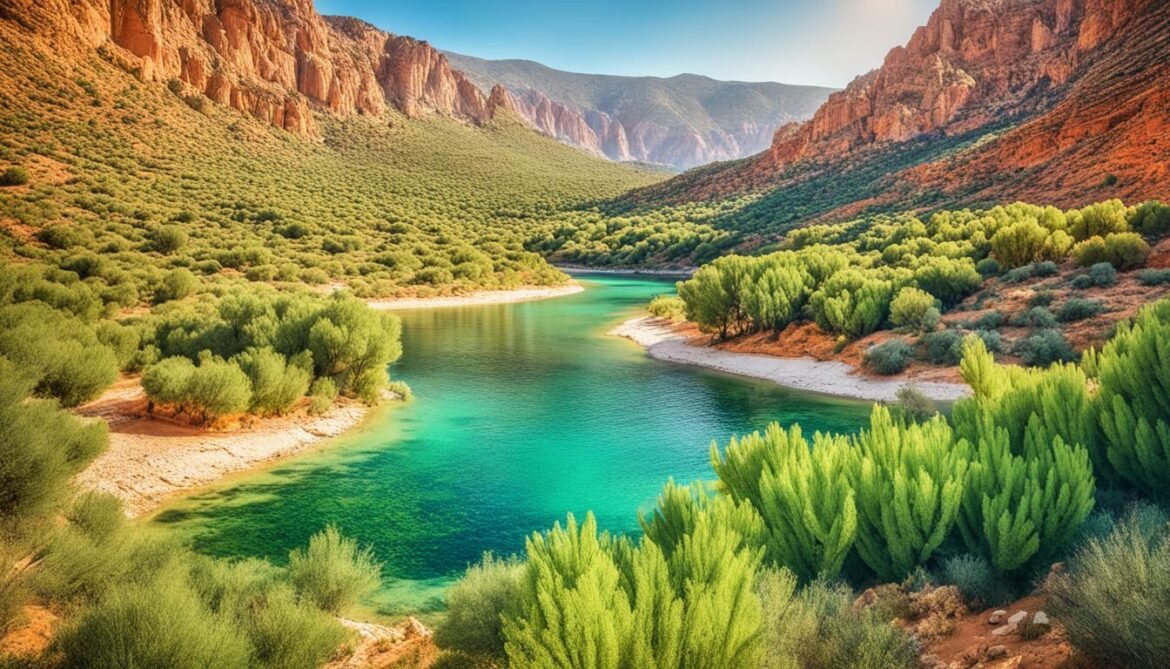
Conservation Efforts in Algeria
Algeria has made significant strides in safeguarding its diverse flora and fauna through conservation efforts. The government has implemented a range of strategies to preserve Algeria’s precious biodiversity, including the establishment of protected areas and active participation in international agreements and conventions.
Protected areas play a vital role in preserving Algeria’s unique ecosystems and species. These designated areas ensure the conservation of habitats, safeguard endangered species, and promote sustainable practices. They provide a sanctuary for Algeria’s diverse flora and fauna to thrive undisturbed.
Furthermore, Algeria’s conservation efforts extend beyond government initiatives. Non-governmental organizations (NGOs) and local communities are actively involved in biodiversity conservation, contributing valuable resources and knowledge. Their collective efforts enhance the effectiveness of conservation initiatives and foster a sense of ownership and responsibility towards the protection of Algeria’s natural heritage.
One critical aspect of biodiversity conservation in Algeria is the implementation of anti-poaching patrols. These patrols help combat illegal hunting, reduce the poaching of endangered species, and raise awareness about the importance of wildlife protection. By actively monitoring and patrolling vulnerable areas, these efforts contribute to the long-term survival of Algeria’s biodiversity.
Conservation Efforts in Numbers
| Protected Areas | Biodiversity Programs | Anti-poaching patrols |
|---|---|---|
| 40+ | 15+ | 50+ |
* Data represents a selection of key conservation initiatives in Algeria. The figures are approximate and subject to change as new efforts arise.
“Conservation is not a one-time effort but an ongoing commitment to safeguard the invaluable biodiversity of Algeria for future generations.” – Dr. Sarah Kamal, Director of the Algerian Biodiversity Conservation Association
While Algeria’s conservation efforts are commendable, more sustained actions and faster implementation are necessary. The challenges facing Algeria’s biodiversity, such as habitat loss, climate change, and pollution, demand proactive and multifaceted solutions. Increased funding, public engagement, and education programs can further strengthen the conservation initiatives in place.
By prioritizing the preservation of its remarkable biodiversity, Algeria can ensure the continued existence of its unique ecosystems and species for generations to come.
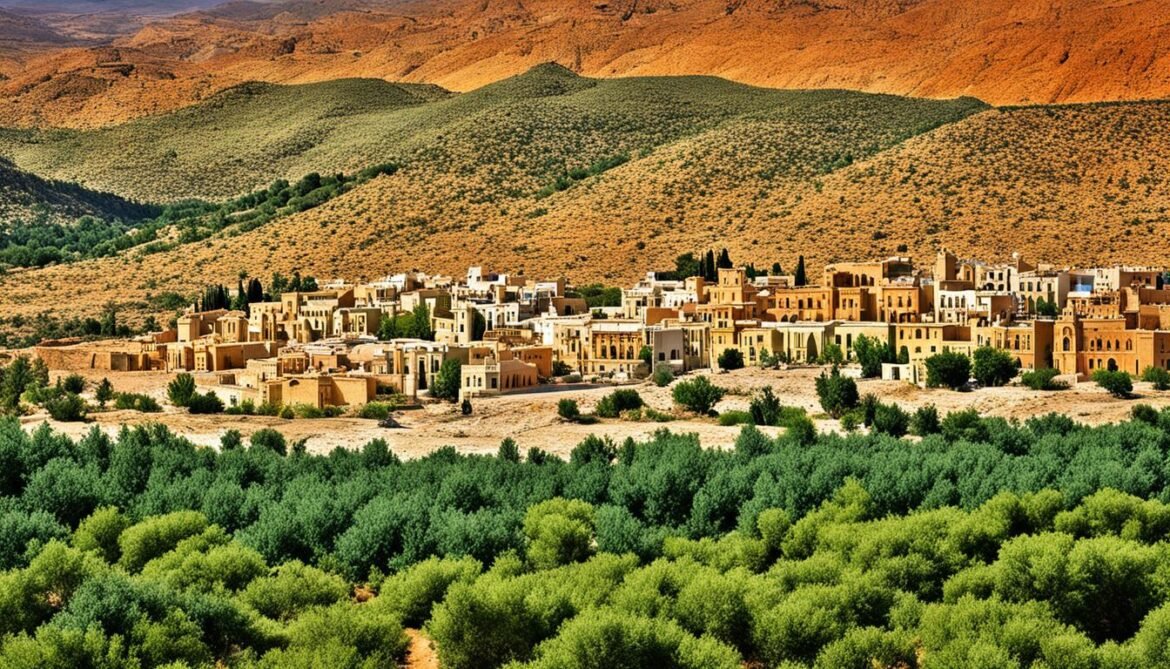
Threats to Algeria’s Biodiversity
Algeria’s biodiversity is facing significant threats from various human-induced factors. The delicate balance of ecosystems is being disrupted, endangering the country’s unique flora and fauna. To fully comprehend the severity of these challenges, it is crucial to examine the key threats that Algeria’s biodiversity is confronted with:
Habitat Loss
One of the most significant threats to Algeria’s biodiversity is habitat loss, primarily driven by agricultural expansion and urbanization. As the population grows and demands for resources increase, natural habitats are being converted into farmland and urban areas. This conversion not only disrupts the natural habitat but also fragments ecosystems, hindering the movement and dispersal of species. The loss of habitats negatively impacts the survival of numerous plant and animal species found in Algeria, causing declines in population sizes and, in some cases, even leading to extinction.
Climate Change
The impacts of climate change pose a significant threat to Algeria’s biodiversity, particularly for species inhabiting fragile ecosystems. Rising temperatures, changing precipitation patterns, and extreme weather events alter the suitable habitats for many species. This disrupts the availability of resources, such as food and water, and affects species’ distribution and behavior. For example, desert-adapted species in the Algerian Sahara face challenges due to the increasing aridity, causing changes in their habitat suitability and leading to population declines.
Poaching
Illegal hunting and poaching continue to pose a threat to Algeria’s biodiversity. The demand for wildlife products, such as ivory and exotic animal skins, drives the illegal wildlife trade. This trade not only depletes populations of endangered species but also disrupts the ecological balance of ecosystems. Poaching affects both iconic and lesser-known species, contributing to the loss of biodiversity in Algeria. Efforts to combat poaching, such as strengthening law enforcement and raising awareness, are crucial to protect the country’s wildlife.
Pollution
Human activities, including industrial development, waste disposal, and agricultural practices, contribute to pollution that impacts Algeria’s biodiversity. Pollution affects air, water, and soil quality, harming both plant and animal species. For example, water pollution can contaminate aquatic environments, leading to the decline of fish populations and the disruption of entire food chains. The introduction of non-native species through pollution can also have detrimental effects on native species and ecosystems. Proper waste management, pollution control measures, and sustainable practices are essential to mitigate the detrimental effects of pollution on Algeria’s biodiversity.
It is imperative to address these threats to Algeria’s biodiversity through collective efforts. Protecting habitats, implementing climate change adaptation strategies, combatting poaching, and adopting sustainable practices are key actions that need to be taken to ensure the preservation of Algeria’s unique flora and fauna for future generations.

Safeguarding Algeria’s Natural Heritage
Preserving Algeria’s natural heritage is crucial for maintaining ecological balance, biodiversity, and the country’s cultural, social, and economic value. The government of Algeria has implemented several conservation efforts to protect the diverse and unique wildlife found within its borders. These initiatives include the establishment of protected areas and the promotion of sustainable development practices.
Through the designation of protected areas, Algeria aims to safeguard important habitats and species from threats such as habitat loss and poaching. These protected areas provide safe havens for Algeria’s biodiversity to thrive and ensure the long-term preservation of its natural heritage.
Furthermore, the government has prioritized sustainable development as a means to safeguard Algeria’s biodiversity. By integrating conservation principles into development projects, the country can minimize the negative impacts on natural ecosystems and promote a harmonious coexistence between humans and wildlife. Sustainable practices, such as responsible land use, energy efficiency, and waste management, are vital for the preservation of Algeria’s biodiversity for future generations.
“The conservation of Algeria’s natural heritage is not only essential for protecting our ecosystems but also for maintaining the unique cultural and historical values associated with our country. By safeguarding our biodiversity, we are ensuring a sustainable future for all Algerians,” says Dr. Ahmed Benmimoun, Minister of Environment and Sustainable Development.
In addition to government initiatives, non-governmental organizations (NGOs) and local communities play a crucial role in biodiversity conservation. These groups work on the ground to raise awareness, conduct research, implement conservation projects, and engage with local communities to foster a sense of ownership and stewardship over Algeria’s natural resources.
Continued efforts and collaboration between the government, NGOs, local communities, and individuals are necessary to address conservation challenges and protect Algeria’s diverse wildlife. By prioritizing the preservation of its natural heritage, Algeria can ensure a sustainable future that balances economic development with the protection of its invaluable biodiversity.

Government Initiatives for Biodiversity Conservation in Algeria
| Initiative | Description |
|---|---|
| Establishment of Protected Areas | The government has designated several protected areas across Algeria to safeguard critical habitats and species. |
| Promotion of Sustainable Development | Algeria prioritizes sustainable development practices that integrate conservation principles, such as responsible land use and energy efficiency. |
| Engagement with NGOs and Local Communities | The government collaborates with NGOs and local communities to enhance biodiversity conservation efforts through awareness campaigns, research, and community engagement. |
| International Agreements and Conventions | Algeria has ratified international agreements and conventions, such as the Convention on Biological Diversity, to strengthen its commitment to biodiversity conservation. |
Urbanization and Biodiversity Conservation
The rapid urbanization in Algeria poses challenges for biodiversity conservation. The increase in urban areas and population growth leads to land consumption, resulting in habitat loss and fragmentation.
As cities expand and infrastructures develop, natural habitats are often replaced by concrete jungles, threatening the survival of various species. The destruction of ecosystems disrupts the delicate balance of Algeria’s biodiversity, endangering wildlife and plant species.
To mitigate the negative impacts of urbanization on biodiversity, sustainable urban development practices must be embraced. One key strategy is the implementation of green infrastructure, which promotes the integration of natural elements into the urban landscape.
Green infrastructure includes the creation of parks, green roofs, urban forests, and other initiatives that mimic or restore natural habitats within cities. These green spaces not only provide a sanctuary for wildlife but also offer various benefits to urban dwellers, such as improved air quality, reduced heat island effect, and enhanced well-being.
By incorporating green infrastructure into urban planning, Algeria can strike a balance between urban development and the protection of natural habitats. This approach ensures that cities are designed in a way that supports biodiversity, allowing both humans and wildlife to coexist harmoniously.
It is crucial for policymakers, urban planners, and communities to prioritize sustainable cities that prioritize biodiversity conservation. By implementing green infrastructure and adopting ecological balance as guiding principles, Algeria can create urban environments that are not only thriving and vibrant but also resilient and ecologically responsible.
“The natural world is one of our greatest treasures, and it is our duty to protect it even as we build our cities.”
Strategies for sustainable cities encompass urban design that promotes compact, walkable neighborhoods, efficient land use, and the preservation of green spaces. These measures ensure that the negative impacts of urbanization on biodiversity are minimized, allowing for the long-term conservation of Algeria’s unique and valuable natural heritage.
Benefits of Sustainable Cities:
- Promote biodiversity conservation
- Enhance the well-being of urban residents
- Improve air and water quality
- Reduce carbon emissions and combat climate change
- Create resilient communities
Challenges of Urbanization:
- Habitat loss and fragmentation due to land consumption
- Disruption of natural ecosystems
- Loss of biodiversity and species extinction
- Increased pollution and waste generation
- Pressure on natural resources
By pursuing sustainable cities, Algeria can ensure the preservation of its biodiversity and the well-being of its citizens. It is imperative that a holistic approach to urban development is adopted, which takes into account the importance of nature and the urgent need to protect it.
| Urbanization | Biodiversity Conservation |
|---|---|
| Leads to land consumption | Results in habitat loss and fragmentation |
| Increases population growth | Threatens the survival of wildlife and plant species |
| Promotes unsustainable development | Requires sustainable practices for mitigating negative impacts |
| Disrupts natural ecosystems | Endangers the delicate balance of biodiversity |
| Prioritizes human needs and infrastructures | Must incorporate conservation efforts and green infrastructure |
Adopting sustainable urban development practices is not only vital for conserving Algeria’s biodiversity but also for creating cities that are resilient in the face of climate change and resource scarcity. By embracing green infrastructure and focusing on ecological balance, Algeria can pave the way for a sustainable future where nature and urbanization coexist harmoniously.
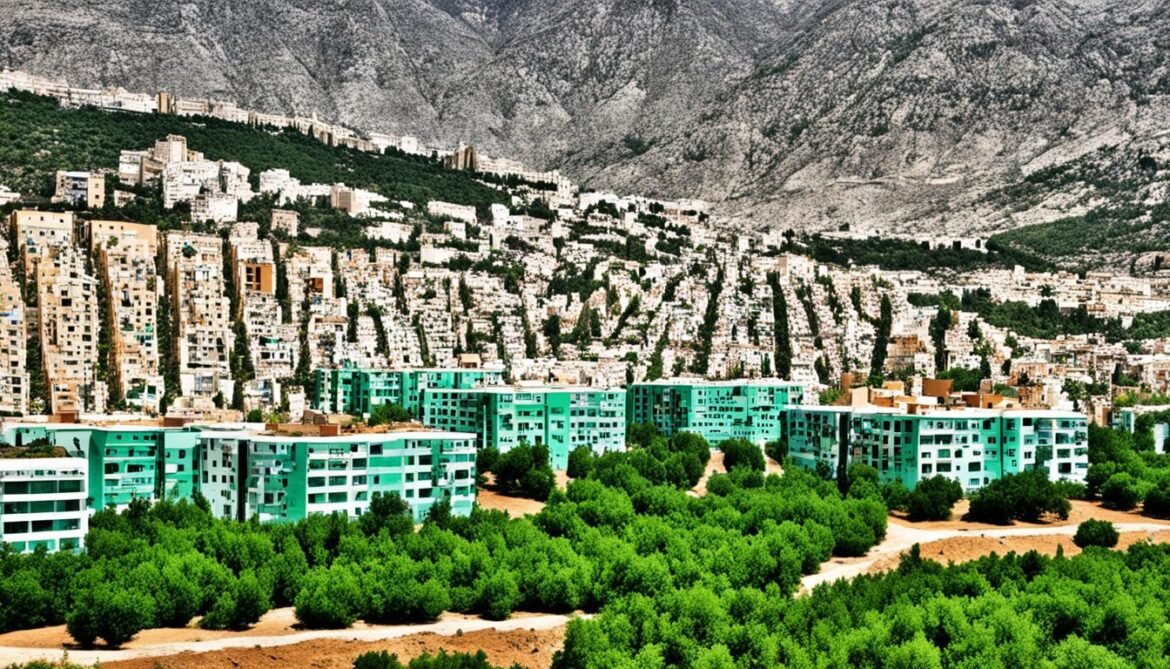
The Role of Green Infrastructure
Green infrastructure plays a vital role in maintaining biodiversity in urban areas. It involves the strategic planning and design of natural and semi-natural spaces within cities, such as parks, green roofs, and urban forests. These green spaces provide habitat for various species, improve air quality, regulate temperature, and enhance the overall livability of cities.
By incorporating green infrastructure into urban planning, Algeria can preserve its rich biodiversity while promoting sustainable development and ecological balance. Urban areas can be transformed into vibrant and sustainable ecosystems that benefit both humans and wildlife.
Benefits of Green Infrastructure in Urban Areas
Habitat Preservation: Green infrastructure creates pockets of natural habitat within cities, offering refuge for diverse plant and animal species. These green spaces serve as essential corridors for wildlife movement, allowing species to thrive even in urban environments.
Air Quality Improvement: Vegetation in green infrastructure areas acts as a natural filter, removing pollutants and improving air quality. This helps reduce respiratory illnesses and creates a healthier living environment for urban residents.
Temperature Regulation: Green spaces in cities help regulate temperature by providing shade, reducing the urban heat island effect. This helps mitigate the impacts of climate change and creates cooler microclimates within urban areas.
Stormwater Management: Green infrastructure features, such as rain gardens and bioswales, absorb and filter stormwater runoff, reducing the strain on stormwater infrastructure. This reduces the risk of flooding and improves water quality in rivers and streams.
Enhanced Aesthetics: Green infrastructure transforms urban landscapes into visually pleasing and inviting spaces. Parks, gardens, and street trees create a sense of tranquility and improve the overall quality of life for residents.
“Green infrastructure is a win-win solution for urban areas. It not only preserves biodiversity and supports ecological balance, but also creates healthier, more vibrant cities for people to live in.” – Alex Green, Sustainability Expert
Investing in green infrastructure is crucial for Algeria’s urban development and the conservation of its biodiversity. Through thoughtful urban planning and design, we can create sustainable cities that harmonize with nature and prioritize the well-being of both humans and the environment.
| Benefits of Green Infrastructure | Examples |
|---|---|
| Habitat Preservation | Urban forests |
| Air Quality Improvement | Green roofs |
| Temperature Regulation | Parks and gardens |
| Stormwater Management | Rain gardens and bioswales |
| Enhanced Aesthetics | Street trees |
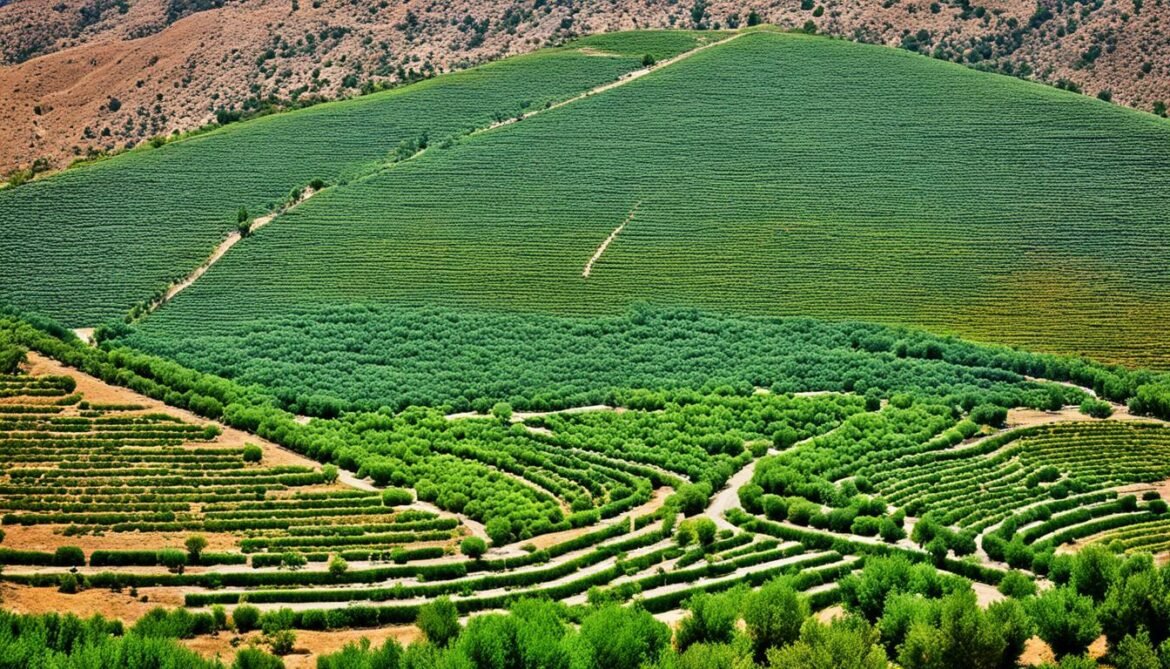
By incorporating these green infrastructure elements into Algeria’s urban fabric, we can create a more sustainable and ecologically balanced future for the country. Let us strive to preserve Algeria’s rich biodiversity while building cities that thrive in harmony with nature.
Conclusion
Algeria’s biodiversity is a precious natural heritage that faces both opportunities and challenges in the context of urban development. The country’s diverse ecosystems provide crucial habitats for unique species, but the impact of urbanization and human activities poses significant threats to their survival. To protect Algeria’s natural heritage and ensure a sustainable future, it is essential to prioritize conservation efforts, embrace sustainable practices, and integrate green infrastructure into urban planning.
Conservation efforts play a critical role in safeguarding Algeria’s biodiversity. The government, non-governmental organizations (NGOs), local communities, and individuals must collaborate to address the threats posed by habitat loss, climate change, poaching, and pollution. By establishing protected areas, signing international agreements, and implementing effective anti-poaching patrols, Algeria can make strides in preserving its rich and unique flora and fauna.
Sustainable practices are key to striking a balance between urban development and biodiversity conservation. Incorporating green infrastructure, such as parks, green roofs, and urban forests, into urban planning can provide essential habitat for species, improve air quality, help regulate temperature, and enhance the overall livability of cities. By embracing sustainable practices, Algeria can protect its biodiversity while promoting a harmonious coexistence between humans and nature.
Continued collaboration between the government, NGOs, local communities, and individuals is essential to overcoming the challenges faced by Algeria’s biodiversity. By working together, they can implement effective conservation strategies, raise awareness of the importance of biodiversity, and inspire sustainable practices at all levels of society. Through these combined efforts, Algeria can ensure the protection of its unique wildlife and ecosystems for future generations to enjoy and benefit from.




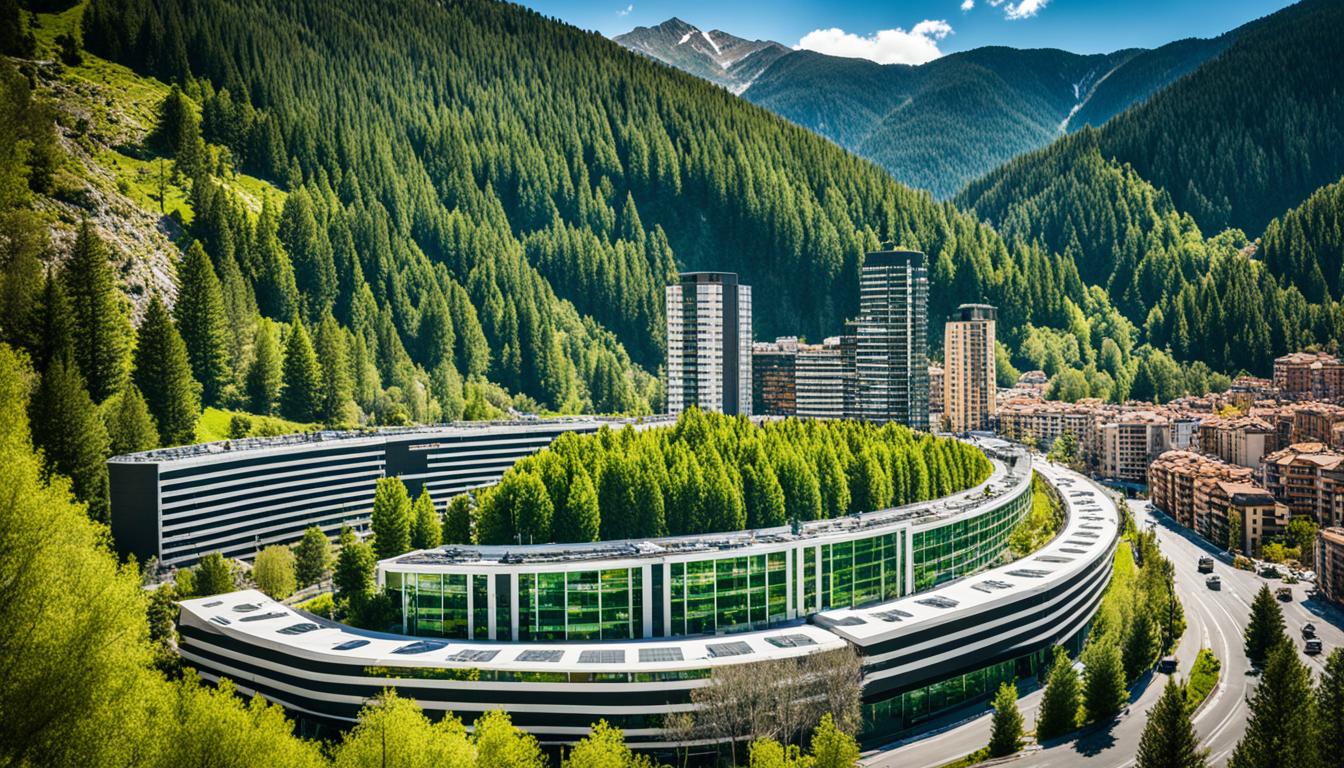
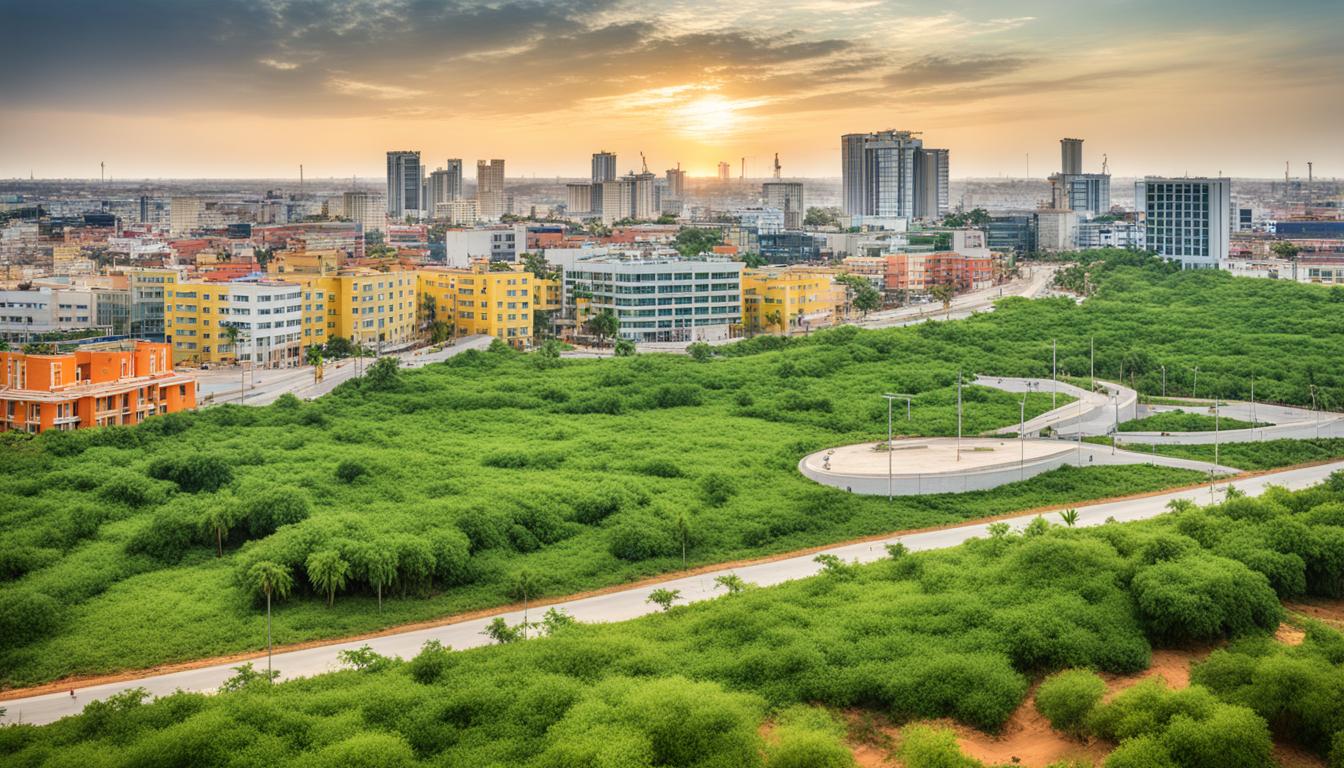
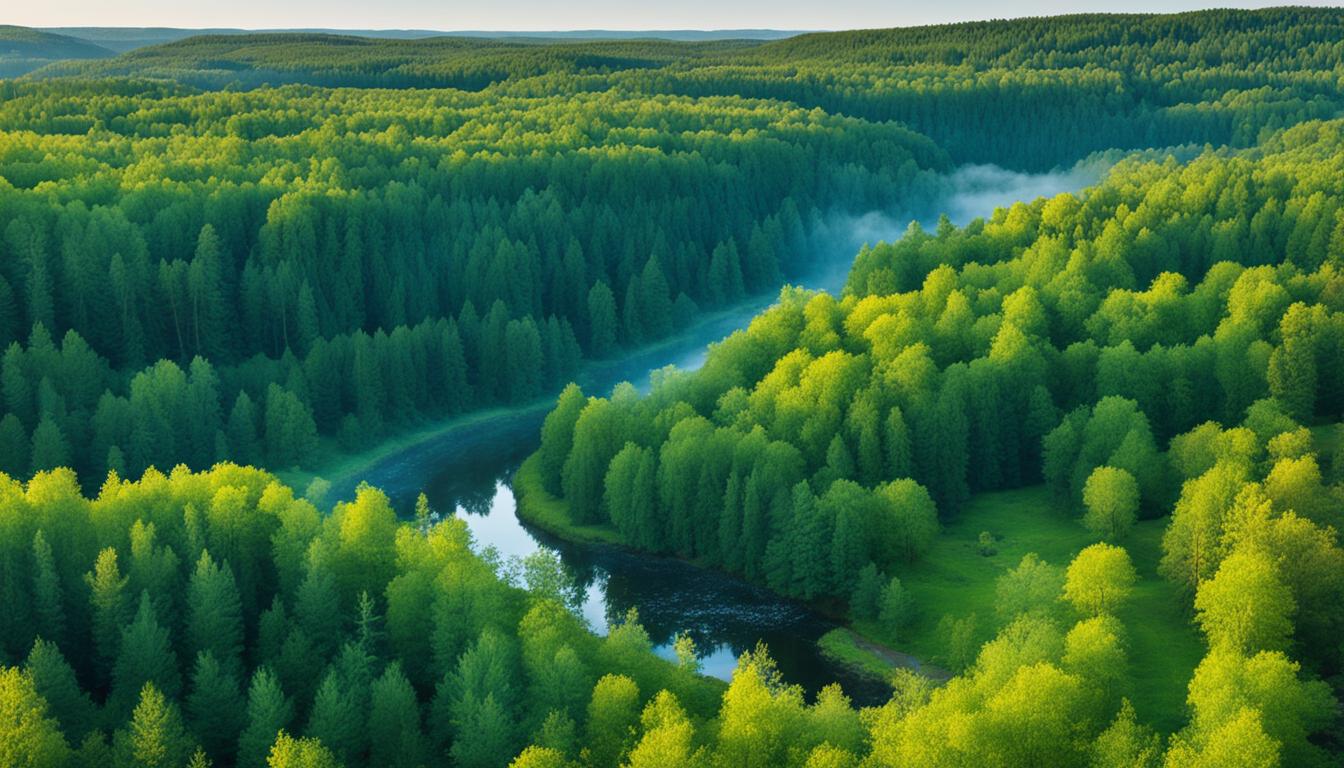
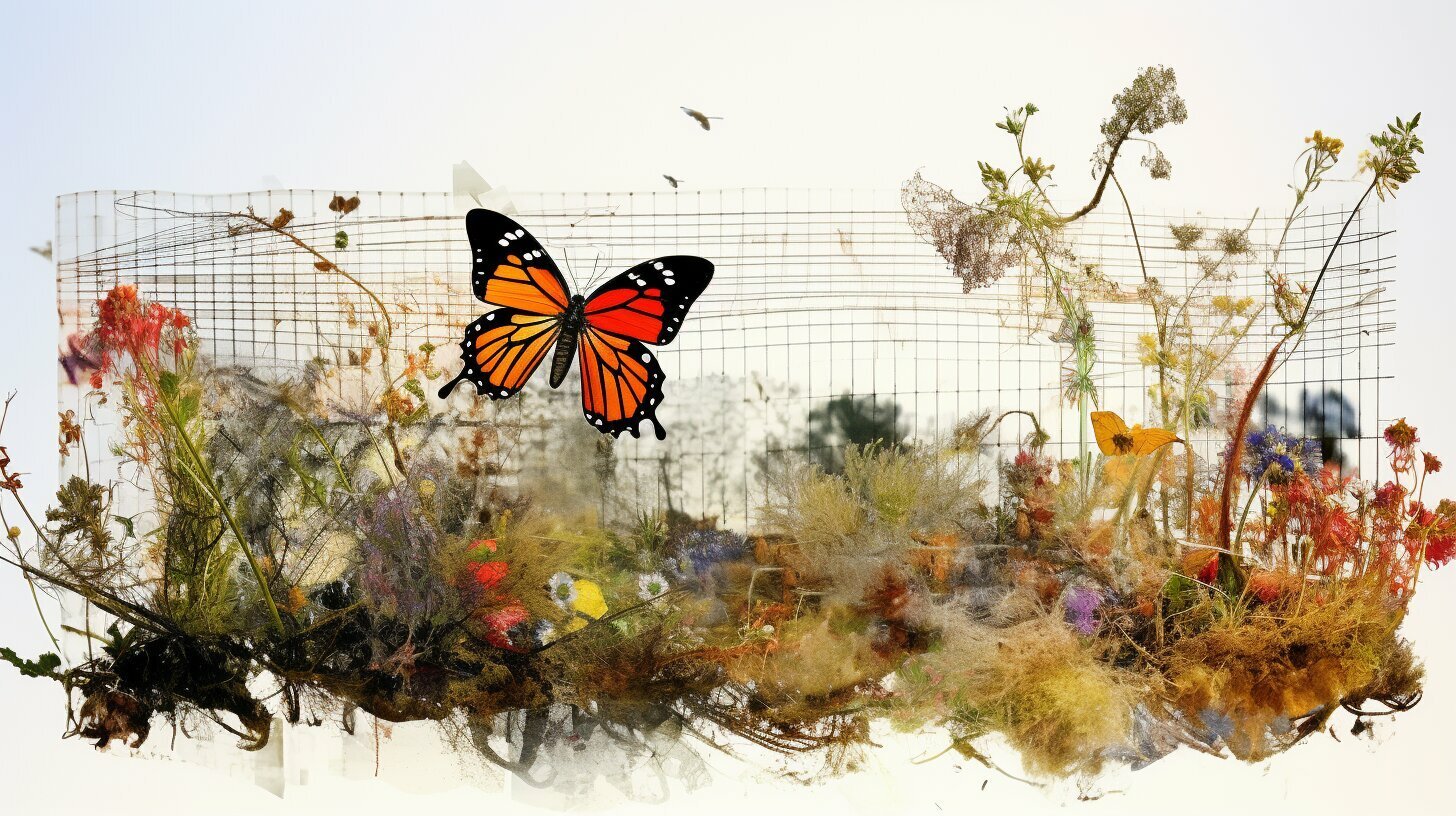

Ben Stansfield is a Sustainability Lawyer at Gowling WLG.
10 months ago[…] is a Sustainability Lawyer at Gowling WLG, specialising in planning and environmental […]